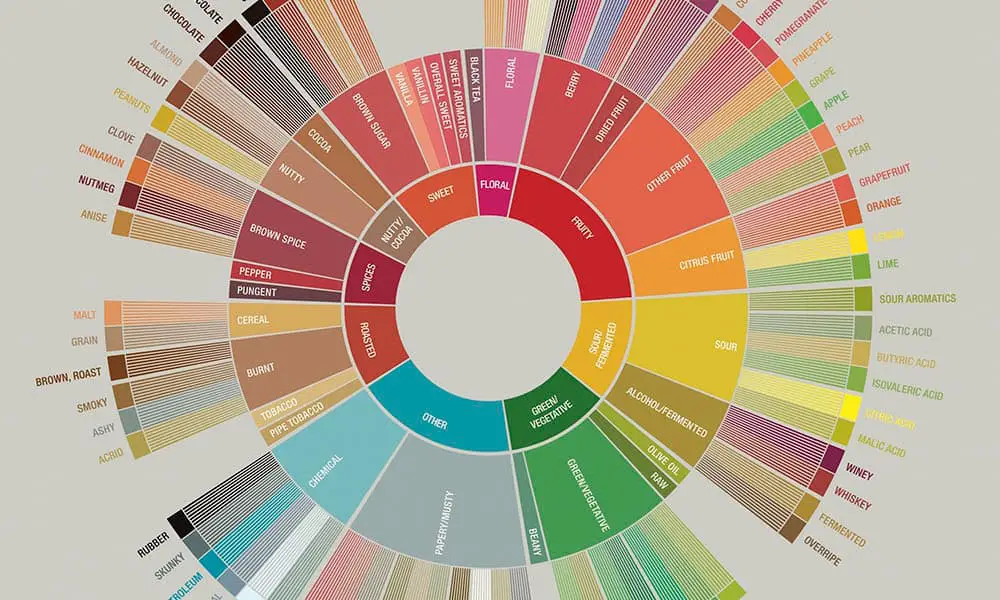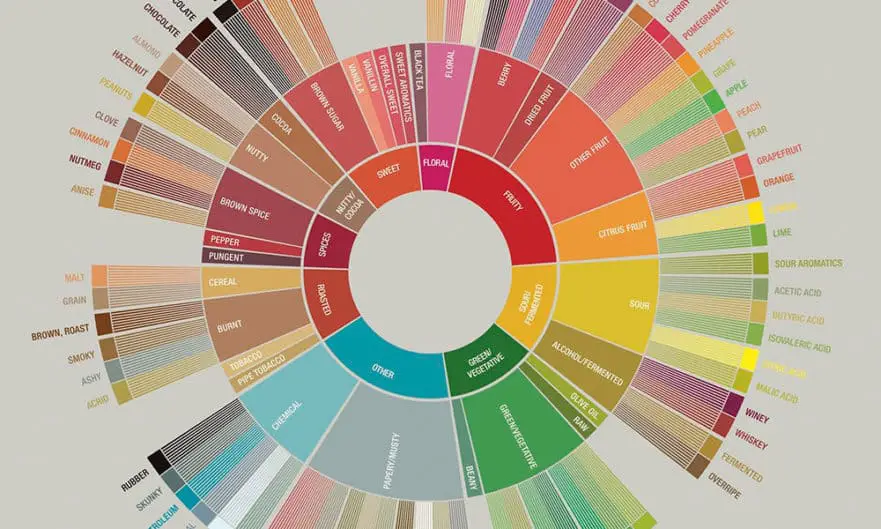
Coffee tastes different depending on where it’s grown. From the fruity, bright beans of Ethiopia to the nutty, chocolatey notes of Brazil, each region produces distinct flavors shaped by soil, climate, altitude, and processing methods.
In this guide, we’ll walk you through the major coffee-growing regions—South America, Central America, Africa, Asia, the Caribbean, and North America—breaking down their flavor profiles and what makes them special. Whether you’re new to coffee or a seasoned taster, you’ll find something to guide your next brew.
Why Coffee Flavor Varies by Region
Ever wonder why a coffee from Kenya tastes zesty while one from Brazil feels smooth? It’s all about the growing conditions. Coffee’s flavor comes from the type of bean, the soil it’s planted in, the altitude of the farm, and how the beans are processed after picking.
Arabica beans lean sweet and soft, while Robusta packs a bolder punch. High altitudes bring out delicate notes, and processing—wet or dry—can shift a coffee from bright to fruity. Here’s how these factors shape the regions below.
- Species and Variety: Arabica beans are smoother and sweeter; Robusta is bolder and more bitter.
- Soil and Climate: Volcanic soils add richness; tropical climates enhance fruitiness.
- Altitude: Higher elevations (above 4,000 feet) produce more complex, delicate flavors.
- Processing: Wet (washed) processing highlights acidity; dry (natural) processing boosts fruitiness.
These elements combine to create the unique profiles of each region. Let’s explore them.
South America: Balanced and Aromatic
South America grows some of the world’s most reliable coffees, with flavors that range from nutty and chocolatey to bright and fruity. Brazil and Colombia dominate the market, but smaller players like Bolivia are making waves in specialty coffee. Grown in fertile soils and moderate climates, these beans are aromatic, medium- to full-bodied, and perfect for everyday drinking or espresso blends.
Brazil
Brazil produces 30–35% of the world’s coffee, making it the top supplier. Its beans, often from regions like Sul de Minas Gerais, are nutty, sweet, and low in acidity, with chocolate and caramel notes. These qualities make Brazilian coffee a go-to for espresso blends.
- Sul de Minas Gerais: Medium body, low acidity. Expect soft fruit, peanut, and milk chocolate flavors. Dark roasts bring out bittersweet cocoa.
- Decaffeinated Brazil: Mild, with caramel and soft fruit notes. Great for decaf espresso blends, offering adequate crema and depth.
Colombia
Colombia’s coffee is smooth, well-processed, and versatile, with medium acidity and heavy body. Grown in the Andes, its beans vary from chocolatey and nutty to bright and fruity, depending on the microclimate.
- Supremo: Large beans with sharp acidity and heavy body. Light fruit flavors like peach and apricot shine in lighter roasts; darker roasts taste like refined sugar.
- Decaffeinated: Low acidity, velvety body, with cherry-like sweetness and mild cocoa in the aftertaste.
Bolivia
Bolivia’s coffee, particularly from Caranavi, is gaining recognition in specialty markets. Grown at high altitudes with fertile soil, it’s clean, sweet, and fruity.
- Caranavi: Medium acidity, silky body. Bright apple and peach flavors, with nutty and chocolatey undertones. Sweetens as it cools, with a tart finish.
Central America: Bright and Complete
Central America’s coffees are crowd-pleasers, striking a balance between bright acidity and smooth body. From Costa Rica’s clean cups to Guatemala’s complex flavors, this region grows beans that work for new drinkers and coffee nerds alike. Volcanic soils and high altitudes give these coffees their crisp, fruity, and sometimes chocolaty profiles.
Costa Rica
Costa Rica, often called the “Switzerland of coffee,” delivers clean, balanced cups. Its Tarrazú region is famous for vibrant, sweet beans grown in volcanic soil.
- Tarrazú: Bright acidity, creamy body. Nutty (hazelnut, roasted peanut) and berry-like sweetness. Stays smooth even when cooled.
Guatemala
Guatemala’s high-altitude farms in regions like Antigua produce complex, full-bodied coffees with spicy and chocolatey notes.
- Antigua: Medium to full body, moderate acidity. Flavors of cocoa, citrus, and spice, with a rich, almost syrupy mouthfeel.
Nicaragua
Nicaragua’s coffee industry has rebounded, with Matagalpa producing bold, aromatic beans.
- Matagalpa: Powerful acidity, heavy body. Intense fruit (strawberry, pear) and caramel sweetness, with a syrupy texture.
Africa: Bold and Fruity
Africa’s coffees are where things get exciting. Known for bright acidity and wild fruit flavors, beans from Ethiopia, Kenya, and beyond can taste like berries, citrus, or even wine. Political challenges in some areas affect supply, but when these coffees hit your cup, they’re unforgettable.
Ethiopia
Ethiopia, the birthplace of coffee, grows diverse beans at high altitudes (up to 7,200 feet). Its coffees are fruity, floral, and wine-like, with processing methods (wet or dry) shaping the profile.
- Harrar: Medium acidity, full body. Intense blueberry and apricot flavors, with syrupy sweetness and hints of honey and citrus.
- Yirgacheffe: Floral, citrusy, tea-like. Light body with jasmine and bergamot notes.
- Sidamo: Balanced, with spicy and fruity notes like berries and tropical fruits.
Kenya
Kenyan coffee, grown on high plateaus, is vibrant and juicy, with sparkling acidity unmatched by most regions.
- AA: Modest body, high acidity. Sweet orange, blackcurrant, and spicy cinnamon flavors, with a winy aftertaste.
Uganda
Uganda’s Mount Elgon region produces rustic, full-bodied coffees similar to Ethiopian beans.
- Mount Elgon: Low acidity, full body. Sweet lemon and plum flavors, with a woodsy, chocolatey undertone.
Rwanda
Rwanda’s coffee, grown in volcanic soils, is bright and clean, with berry and citrus notes.
- Gakenke: Medium acidity, medium body. Red fruit (raspberry, cherry) and grapefruit flavors, with a smooth finish.
Southeast Asia: Earthy and Bold
Southeast Asia’s coffees are heavy-hitters, with bold, earthy flavors and low acidity. Indonesia’s volcanic islands produce some of the most distinctive beans, while Vietnam churns out Robusta for blends. If you like your coffee intense and spicy, this region’s for you.
Indonesia
Indonesia’s volcanic soils produce bold, complex beans. Sumatra Mandheling is a standout for its herbal and fruity character.
- Sumatra Mandheling: Massive body, low acidity. Spicy (cinnamon, clove) and sweet fruit flavors, with a lingering, syrupy aftertaste.
- Java: Medium body, low acidity. Earthy, smoky, with dark chocolate notes.
Vietnam
Vietnam, the second-largest coffee producer, focuses on Robusta, which is bitter and bold but less common in specialty coffee.
- Robusta: High caffeine, heavy body. Nutty, oat-like flavors, often used in instant coffee or blends.
Southwest Asia: Wild and Rare
Southwest Asia’s coffee scene is small but legendary, with Yemen stealing the show. Grown in harsh, arid conditions, Yemeni beans are unlike anything else—wild, spicy, and hard to find. If you’re after something exotic, this is it.
Yemen
Yemen’s Anesi coffee, grown in arid highlands, is earthy and exotic, with a cult following.
- Anesi: Low acidity, heavy body. Wild flavors of cardamom, dark berries, and spiced chocolate, with a bittersweet herbal finish.
The Caribbean: Smooth and Luxurious
The Caribbean’s coffees are all about smoothness, grown on islands with high mountains and rich soils. Jamaica’s Blue Mountain is the rockstar here, fetching high prices for its balanced, mild flavors. These beans are perfect for a refined, easy-drinking cup.
Jamaica
- Blue Mountain: Low to medium acidity, good body. Floral, nutty, and mildly spicy (chamomile) flavors, with a soft, balanced finish.
Puerto Rico
- Yauco Selecto: Medium body, moderate acidity. Sweet cocoa and tropical fruit notes, with a clean aftertaste.
North America: Mild and Premium
North America’s coffee comes from one place: Hawaii’s volcanic slopes. Kona coffee is rare, expensive, and loved for its clean, mild flavors. Grown with meticulous care, it’s a treat for anyone who gets their hands on it.
Hawaii
- Kona: Low acidity, thick body. Rustic sweetness with maple syrup, chamomile, and chocolate notes. Oily texture and long aftertaste.
Comparison of Flavor Profiles
Picking a coffee can feel overwhelming with so many options. This table sums up the flavor profiles of key regions to help you choose:
| Region | Acidity | Body | Key Flavors |
|---|---|---|---|
| Brazil | Low | Medium | Nutty, chocolate, caramel |
| Colombia | Medium | Heavy | Fruit, caramel, cocoa |
| Costa Rica | Bright | Creamy | Nutty, berry, sweet |
| Ethiopia | Medium | Full | Blueberry, citrus, floral |
| Kenya | High | Modest | Orange, blackcurrant, spicy |
| Sumatra | Low | Massive | Spicy, fruity, earthy |
| Yemen | Low | Heavy | Cardamom, dark berry, herbal |
| Jamaica | Low-Medium | Good | Floral, nutty, mild spice |
| Hawaii | Low | Thick | Maple syrup, chocolate, chamomile |
How to Choose Your Coffee
Not sure where to start? Your taste buds can guide you. If you love bright, zesty coffees, try Ethiopian Yirgacheffe or Kenyan AA. For smooth, nutty flavors, Brazilian Sul de Minas or Costa Rican Tarrazú are solid picks. Craving something bold and earthy?
Go for Sumatra Mandheling or Yemeni Anesi. For a balanced daily brew, Colombian Supremo or Guatemalan Antigua are tough to beat. Play with single-origin beans and roast levels—light roasts pop with fruit and acidity, while dark roasts lean into chocolate and body.
Final Thoughts
Coffee’s flavor tells the story of where it’s grown, from Ethiopia’s misty highlands to Sumatra’s volcanic slopes. Each region brings something unique, shaped by nature and the people who farm it. Pick a new origin, brew a fresh cup, and taste the difference. What’s your go-to coffee region? Drop a comment and let us know!

